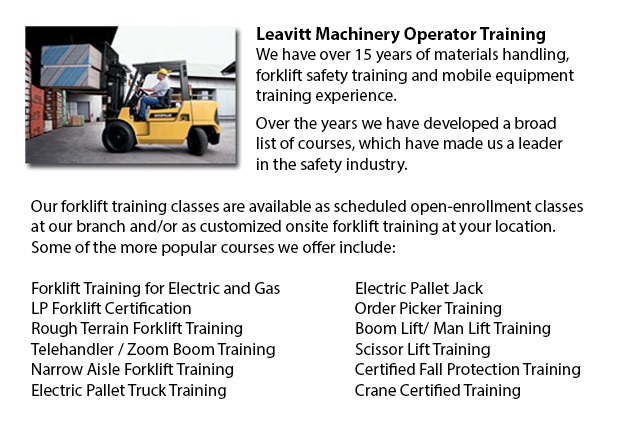
Pallet Stackers Training Ontario - A pallet stacker is a kind of pallet jack that is employed to transfer, stack and haul palletized produce that are overly heavy for manual lifting. Its key function is to load and unload pallets on trucks, in addition to transferring pallets to and from various locations within a stockroom space or warehouse. For the most part pallet stackers are made of heavy duty materials to endure extreme weights. Pallet stackers are sometimes called pallet jacks. They can be operated from a seated, upright or walk-behind position. Pallet stackers are separated into manual and powered varieties.
Pallet jacks are commonly comprised of a set of forks that are capable of sliding underneath a pallet, capable of raising to a desired height or moving it to a particular location. The motor section or casing houses the gas-run, electronic or hydraulic apparatus that powers the piece of equipment.
Manual pallet stackers are hand-powered. They work hydraulically to make lifting heavy pallets an easier job. Typically a walk-behind model meaning they are operated by pulling and pushing the jack to its preferred location. Utilizing a foot pedal or handle raises the stacker's forks. Squeezing a handle or trigger returns the forks to the floor. These designs of pallet stackers are perfect for lighter loads of up to approximately 1 ton or 907.18 kg.
Electric or gas powered pallet stackers can accommodate extreme lifting weights of up to 5 tons or 4535.92 kg. They are physically less demanding than the manual styles due to the mechanized power to elevate and lower the stacker's forks. These versions are steered by turning the handle in a particular direction. There is a button on the handle that functions to raise and lower the forks. A throttle found on the stacker's handle moves the appliance forward and in reverse. This type of equipment is commonly known as a forklift and is operated from a sit-down posture.
As the fork width, load maximum and lift height vary dramatically between different models, picking the right pallet jack to fit the activity is important. Some stacker's lift peak may allow multiple pallets to be stacked, while others may only allow two at a time. Some models of these forklifts feature an adjustable fork in order to allow the jack to slide beneath pallets of unusual sizes and shapes. Multiple fork models can be fairly effective when different varieties of pallets are being used in the same stockroom.
-
Scissor Pallet Trucks
Scissor Pallet Truck Training Ontario - Scissor pallet trucks are built for moving and lifting singly stacked pallets by integrating a lifting apparatus that allows the pallets on the truck to be elevated. This apparatus is a first-rate instrument fo... More -
Reach Trucks
Reach Truck Training Ontario - Reach Trucks are mechanized equipment utilized for loading and storage in certain businesses that maintain storage of materials to finished merchandise on a pallet which are then inserted into lofty shelving units. This... More -
Clark Forklift
Clark Forklift Forklift Training - Presently, there are no less than 350,000 Clark forklifts performing globally, and upwards of 250,000 in service in North America alone. With five major lines across the world, Clark is proud to be one of the most e... More -
Doosan Forklift
Doosan Forklift Training Ontario - Doosan Infracore Company Ltd. is an international organization consisting of Diesel Engines, Defense Industry goods, Industrial Vehicles, Construction Technologies and Machine Tools and Mechanization Systems. I... More -
Hyster Forklift
Hyster Forklift Training Ontario - Hyster is globally renowned as an industry leader in the lift truck producing business. However, it started as a manufacturer of lifting equipment and winches. Most of its production was concentrated in the Pacifi... More

Forklift Certification Ontario
TOLL FREE: 1-888-254-6157
Toronto, Ontario
forkliftcertificationontario.com
Email Us
About Us


